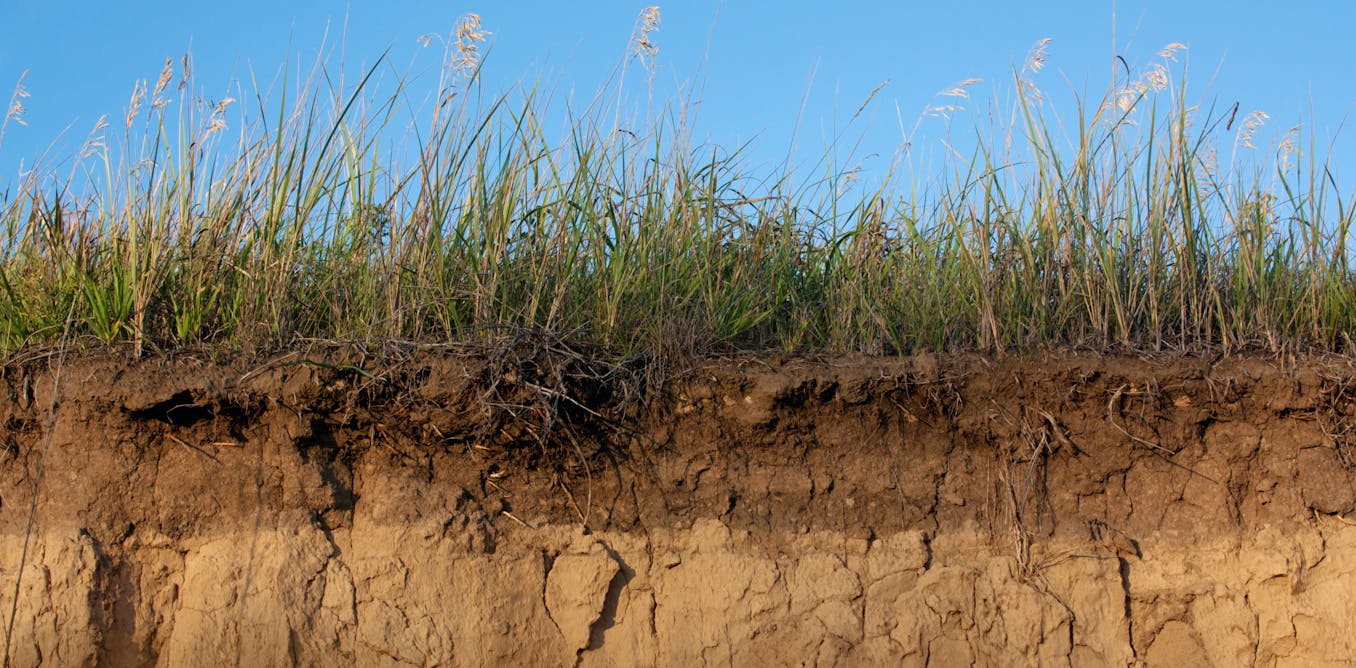
- Select a language for the TTS:
- UK English Female
- UK English Male
- US English Female
- US English Male
- Australian Female
- Australian Male
- Language selected: (auto detect) - EN
Play all audios:
The world’s soils could be a key ally in the fight to limit global warming to 2°C, thanks to their ability to store carbon and keep greenhouse gases out of the atmosphere. France’s
agriculture minister Stéphane Le Foll has founded an ambitious international research program, called “4 pour mille” (“4 per 1000”), which aims to boost the amount of carbon-containing
organic matter in the world’s soils by 0.4% each year. The program was launched officially today at the United Nations climate summit in Paris, with the hope to sign up as many nations as
possible. How much carbon do soils store? A lot. At about 2.4 trillion tonnes of carbon, soil is the largest terrestrial carbon pool, and the top 2 metres of the planet’s soils hold four
times as much carbon as all the world’s plants. Carbon stored in soil can also stay there for a very long time relative to carbon in plants. Thanks to recently published maps of global soil
carbon stocks, we can work out how much extra carbon needs to be stored in soils (and where) in order to meet the target. THE SIZE OF THE TASK There are roughly 149 million square kilometres
of land in the world, so if all the world’s soil carbon were dispersed evenly there would be 161 tonnes per hectare. Hitting the 0.4% target would mean increasing soil carbon stocks by 0.6
tonnes (600 kg) of carbon per hectare per year, on average. But of course, soils around the world vary widely in carbon storage – tropical peat soils, for example, hold about 4,000 tonnes of
carbon per hectare, whereas sandy soils in arid regions may only hold 80 tonnes per hectare. The type of above-ground vegetation and how quickly the soil microbes use the carbon can also
affect the amount of storage. Generally speaking, only a quarter of organic matter added to soil ends up being stored as carbon in the long term. Farmers and other landowners would need
detailed information about what exactly they will need to do to their own soils to boost their stored carbon by the required amount. IS THE TARGET ACHIEVABLE? Studies around the world
suggest that soil carbon can potentially be stored at a rate of 500 kg of carbon per hectare per year – slightly below the average target – by reducing tillage and planting legume cover
crops. These estimates change with soil type and climatic regions. Our research suggests that some cropland areas of the world have the potential to hit the 0.4% target, locally at least,
through more modest overall increases in carbon storage. Restoring the soil’s carbon content in these areas is a win-win situation, as it will offset greenhouse gas emissions and boost soil
quality at the same time. One such place is Australia, where current soil carbon estimates suggest that the 0.4% target could be met by boosting soil carbon by just 220 kg per hectare –
something that could easily be delivered in places that are not suffering drought. The “4 per 1000” aspiration is an ambitious one, but perhaps even more important is the effect this
initiative will have on promoting good soil management, which in turn can help to mitigate climate change. By encouraging farming practices that store more carbon, we can also help farmers
improve the quality of their soils and boost food security at the same time.






